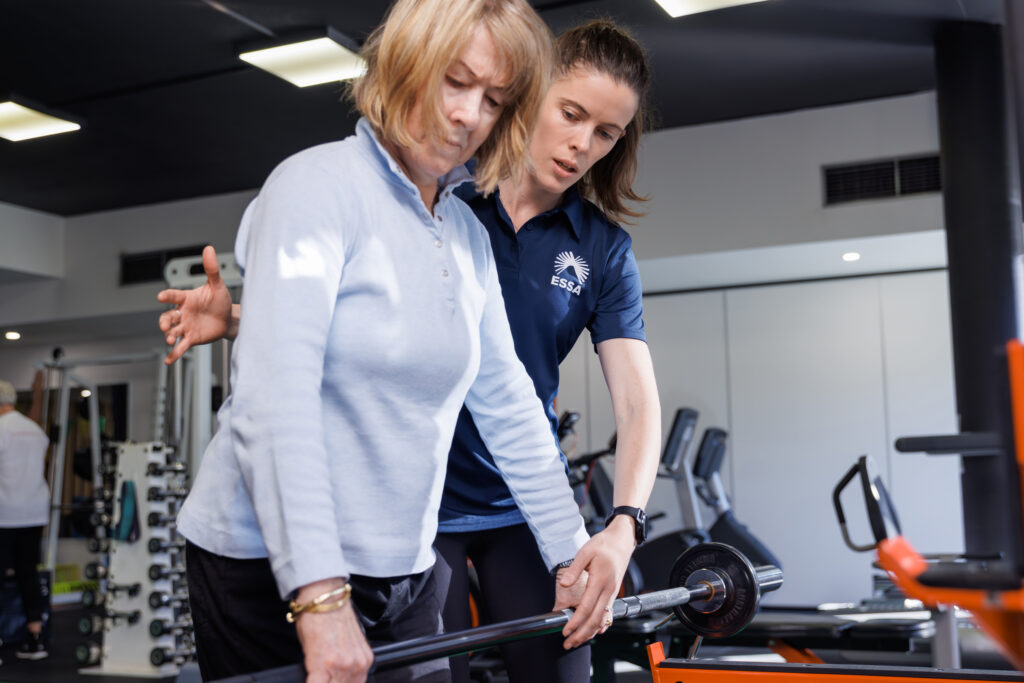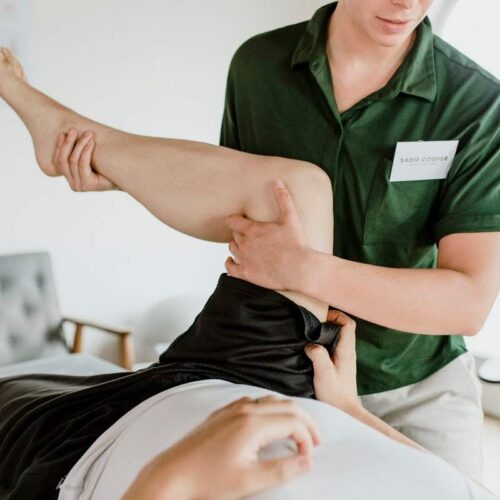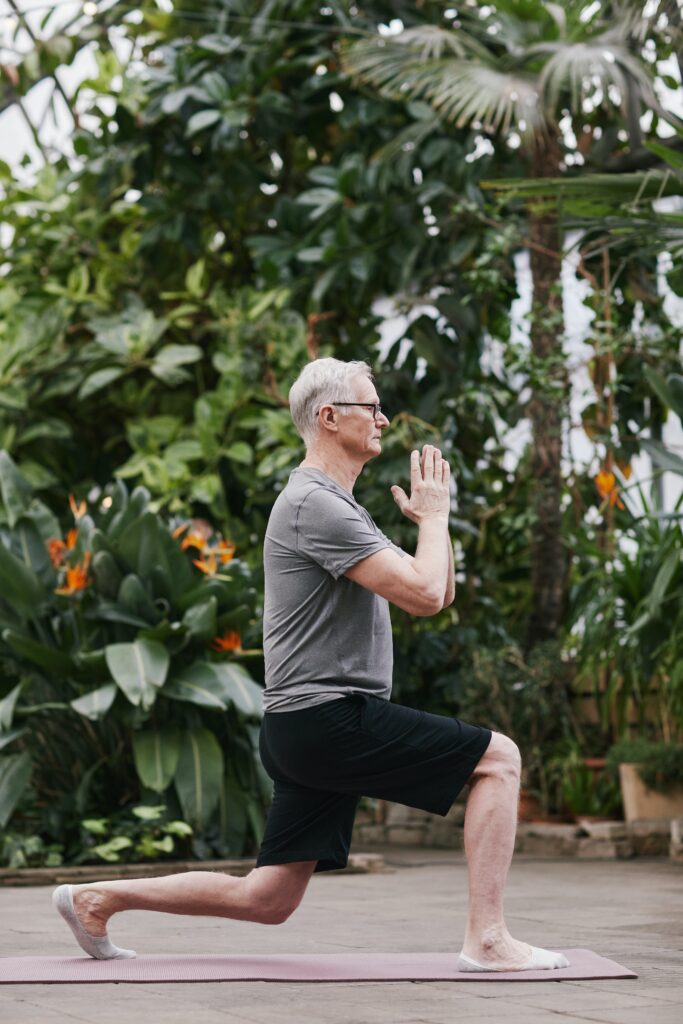Exercise for joint and bone health
Strong joints and healthy bones are vital for mobility, independence and overall quality of life. Regular, well-prescribed exercise plays a key role in maintaining joint integrity, preserving bone density, reducing pain and helping recovery from injury or chronic conditions.
Home / Joint and bone health

How exercise benefits your joints and bones
Exercise helps build and maintain bone mass through mechanical loading, resistance and impact which stimulate bone-forming cells.
Strength training and balance work reduce the risk of falls and fractures, particularly in older adults or those with low bone density.
For people with joint pain or arthritis, regular movement can reduce stiffness, improve function and slow the progression of disability.
A tailored, multidisciplinary approach with guidance from an Accredited Exercise Physiologist (AEP) is especially important when managing bone or joint conditions. It balances benefit with safety.
Joint and bone conditions

Osteoarthritis
Exercise helps reduce pain, maintain joint function and support muscle strength around arthritic joints.

Osteoporosis and bone density
Weight-bearing, resistance and balance activities help slow bone loss, build strength and reduce fracture risk.

Lower back pain
Movement and strengthening of spinal stabiliser muscles help improve posture, reduce pain and support recovery.

Fibromyalgia
Gentle, graded exercise can ease widespread pain and stiffness, improve function and reduce fatigue.

Rheumatoid arthritis
Exercise is one of the most effective and potent treatments for those living with rheumatoid arthritis.
Injuries and recovery
Rehabilitation through guided exercise restores strength, joint mobility and bone healing after fracture and trauma.
Get started safely
1. Work with a professional
If you’re living with arthritis, osteoporosis, back issues or recovering from injury, an Accredited Exercise Physiologist (AEP) can design a safe and effective exercise plan tailored to your needs and condition.
2. Follow a balanced exercise routine
A well-rounded program should include:
- resistance/strength training (e.g. using weights, resistance bands or bodyweight)
- weight-bearing and impact activities (as tolerated)
- balance, coordination and posture work
- flexibility and mobility exercises.
This helps promote bone strength, joint stability and functional movement while reducing fall risk.

3. Progress gradually
Start slow, especially if you’re new to exercise, have low bone density or are coming back after an injury. Gradual progression helps your bones and joints adapt safely and minimises the risk of pain or injury.
4. Listen to your body
Pay attention to pain, stiffness or discomfort. Mild soreness is normal when starting or increasing training, but sharp pain, swelling or joint instability are signs to slow down or seek advice.
5. Include variety and novel movement
Mixing up your exercise routine and including new movement patterns (such as sideways stepping, balance challenges or gentle jumping) can help stimulate bone remodelling and improve joint control.
Frequently asked questions
What is an Accredited Exercise Physiologist (AEP)?
An Accredited Exercise Physiologist (AEP) is an allied health professional that prescribes individualised exercise therapy to help people manage their chronic conditions, disabilities, long-term injuries and so much more. They are the most qualified professionals in Australia when it comes to the prescription safe and effective of exercise therapy.
Can exercise reverse osteoporosis or bone loss?
Exercise can’t fully reverse osteoporosis, but resistance and impact training can slow bone loss and help build strength, reducing fracture risk.
Will high-impact exercise damage bones or joints in older adults?
Not necessarily. Well prescribed, moderate impact exercise (such as brisk walking or step-ups) can be beneficial. High-impact or spinal flexion exercises should be adapted for those with vertebral fractures or frailty.
What kind of strength training is safe for someone with osteoporosis?
Progressive resistance training targeting major muscle groups is safe and effective, particularly when tailored and progressed under expert supervision.
Can exercise help with joint pain from osteoarthritis or rheumatoid arthritis?
Yes. Movement and strength exercises can reduce pain, improve joint range of motion and help you maintain daily activities.
How often should I exercise to protect my joints and bones?
Most adults benefit from at least two strength sessions per week and regular weight-bearing or balance activities. Frequency and type of exercise should be adjusted based on your condition, capacity and recovery.
You may also like
Looking for more information? Check out more factsheets and articles for practical, evidence-based tips on managing joint and bone conditions.

Exercise, Bone Health and Osteoporosis
What is osteoporosis? Osteoporosis is a bone condition, affecting more than 800,000 Australians as of 2022. It’s a condition where the bones become fragile, weak and brittle, leading to a higher risk of fractures from minor bumps or accidents. While osteoporosis is sometimes assumed to affect older and elderly people, it can affect anyone of […]

Why and How You Should Exercise With Arthritis
October 12th is World Arthritis Day and it’s a great opportunity to raise awareness for a condition that affects 528 million people worldwide. It’s also the perfect time to show our support for the 1 in 5 Australians over the age of 45 that are affected by osteoarthritis (OA). Let’s take a look at how […]

